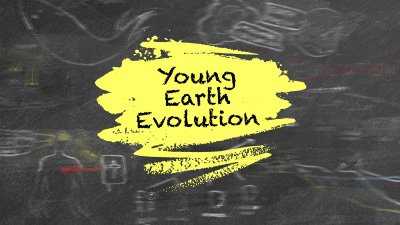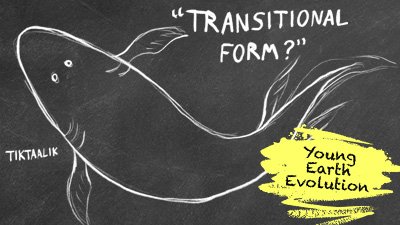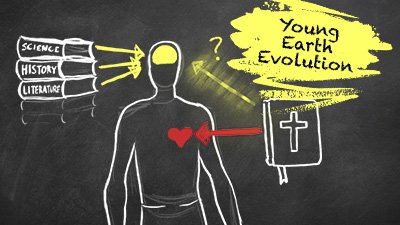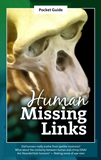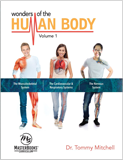
Are There Multiple Human Species?
Can human evolution fit into young-earth creation?
Darwin once divided humanity into multiple races,1 some closest to the gorillas2 and another fully human. His disciples split humanity even further, alleging that there were multiple species of humans. In other words, humans were just highly evolved animals with wide gulfs between the species, just like other kinds of organisms. Now some creationists are also saying there are multiple human species.
Defining Terms
Before moving forward, it is important to ask two questions: what is a human, and what is a species?
Before moving forward, it is important to ask two questions: what is a human, and what is a species? The second question can be answered only ambiguously. The problem of defining species is so complex that historian of science John S. Wilkins has written that there are “n+1 definitions of ‘species’ in a room of n biologists.”3 However, there is a weak consensus around a general definition of species, using the biological species concept. Ernst Mayr, the primary advocate of the position, defined biological species as “groups of interbreeding natural populations that are reproductively isolated from other such groups.”4 This is by far the most common definition of species.
However, Todd Wood explicitly advocates for a pluralistic view of species when talking about human species.5 He wants to apply multiple definitions of species simultaneously to define groups, and he insists that when he says human species, he only means in a biological sense—not that they are somehow less than human, as all “human species” are descended from Adam. This is, however, somewhat of a self-contradictory position. Species do not tend to be defined by simultaneously using multiple conceptions in biology.6 So if Dr. Wood wishes to combine multiple conceptions, he must defy the normal accepted pattern of taxonomy, and thus not be defining species in a biological sense. Alternatively, he could define species in a biological sense, but then he must choose the conception of species he wishes to use. Not picking one of these options is disingenuous because it makes his idea almost immune to criticism. If he is criticized for this pluralistic approach, he can argue that he wants to remain in keeping with Scripture and keep all humans together. If he is criticized for saying humans are multiple species in the biological sense, he can point to the pluralism to redefine biological species.
Here again, the issue of clarity raises its head. The average audience will not know that a creation speaker means species strictly in a biological sense. They hear the word species and assume different animals, like lions and wolves. When they hear “different human species,” they hear that humans are not all the same. Some might even hear evolution. Dr. Wood argues we don’t want to pander to the ignorance of the masses.7 However, as a former college professor, he knows that you cannot teach a concept unless the students understand the concepts that underly it. Further, he is here assuming that the evolutionists are right and that multiple species of humans have existed in the past. It is also perplexing for him to point out that the biological concept of species is flawed and then appeal to it in order to have multiple human species.
The problem here is that the evolutionary view of human species assumes ancient ancestry and significant differences in human species. The way evolutionists think speciation works is phyletically, meaning that at a given point in history, one species branches into either one or two new species depending on the circumstances. The implications of this for the idea of multiple human species is astounding. It implies that man has been progressing upward through history until he arrived at modern Homo sapiens. Thus the acceptance of multiple species of fully human people at least indirectly implies the evolutionary model. Obviously Dr. Wood and other creationists who accept multiple human species would deny the implication, but it is still there. To accept the concept of multiple human species implies that the Biblical model, that mankind was created perfect in the image of God a mere 6,000 years ago and that he subsequently fell and is suffering from a degraded genome, is false.
Candidates for Multiple Species
Dr. Wood puts forth several arguments as to why he thinks there are multiple species of humans, including H. erectus, H. neanderthalensis, A. sediba, and more recently H. denisova.8 Regarding Neanderthals and Homo erectus, Wood claims,
In the case of fossil hominids, well-known taxa like Neandertals and the H. erectus complex are known from numerous individuals (see MacLatchy et al. 2010) and are well-documented as different from modern humans. Neandertals in particular have good evidence of being a separate species from modern Homo sapiens. Neandertals differ from modern humans in their morphology and their development (e.g., Ponce de León and Zollikofer 2001; Smith et al. 2010). The recently reported Neandertal genome also revealed genetic differences from modern humans (Green et al. 2010). The Neandertal genome also revealed evidence of hybridization with Europeans and Asians, but the levels were so low (<5%) that one may conclude that Neandertals in general did not hybridize with contemporaneous Homo sapiens.9
Yet, based on population numbers (early post-flood vs. over eight billion people now), a 5% hybridization still showing up after 4,000 years of massive human population growth, mutation, and dilution of the Neanderthal genetics, as well as the degraded quality of the Neanderthal genome in particular, is actually a huge amount. If Neanderthals were one group who left Babel (or possibly a group who splintered off from a Babel group) and moved to inhospitable places like northern and central Europe and all over Asia during the ice age, how many other groups would we expect them to have mixed their genes with? The same applies to Denisovans, and although very little fossil remains have been found, their DNA has also been found to make up nearly 5% of the genome of certain Filipinos and a noteworthy percentage in some Melanesians as well.10
Choosing Classification Characters
Dr. Wood then discusses how he selects characteristics which will be incorporated into his homology studies.
Statistical baraminology does have drawbacks, however, especially in the area of character selection (Williams 2004; Wood 2008b). Put simply, how do we know which characteristics are important in distinguishing baramins? Since the characteristics are used to calculate distances, it would be easy to assemble a set of characteristics that could exaggerate differences (or similarities) between any set of taxa . . .
First, try to avoid imposing a creationist bias (e.g., for finding discontinuity at a particular taxonomic level) by evaluating character sets compiled by noncreationist experts. It is true that these sets of characters could also be biased, but since they are compiled for cladistic analysis rather than statistical baraminology, I doubt that the bias would be consistently in favor of the discontinuity hypothesis. In practice, this seems to be the case. Though the rank of family is generally where we find the strongest evidence of discontinuity, there are significant exceptions (Wood 2006). Baraminological analyses of some character sets even yield uninterpretable results, as it did for two character matrices in the hominid baraminology study (Wood 2010a). Since discontinuity is observed as predicted in 60% of cases studied (Wood 2009), I would argue that any “pro-evolutionary” bias does not seem to be adversely affecting statistical baraminology studies.11
While it’s admirable that Dr. Wood wants to examine the data without preconceived notions, does it make sense to avoid “imposing a creationist bias” but to use statistical analysis and cladistics from evolutionists, which he feels won’t skew his discontinuity hypothesis?
While it’s admirable that Dr. Wood wants to examine the data without preconceived notions, does it make sense to avoid “imposing a creationist bias” but to use statistical analysis and cladistics from evolutionists, which he feels won’t skew his discontinuity hypothesis? Earlier in the same paper (also on page 11) he mentions that “Predictions of discontinuity appear to be accurate in about 60% of the test cases, but this is not statistically significant (Wood 2009).” So which is it? Does that really eliminate bias, or does it introduce evolutionary bias? Then, to elaborate on character selection of baraminological studies, Wood states,
Finally, with regard to character selection, DeWitt (2010) is correct that the characters in statistical baraminology are all equally weighted. Though he finds this questionable, he and other critics provide little justification for using the characters they prefer to distinguish A. sediba from members of genus Homo. DeWitt (2010) emphasizes limb proportions, and Menton (2010) notes the differences in noses between A. sediba and Homo sapiens. Why these specific characteristics should be diagnostic of the human holobaramin is unclear. . . .12
Second, statistical baraminology ought to be a preferred method for creationist evaluation of fossil taxa because we can assign estimates of the significance of the similarities and differences, which qualitative evaluations of individual traits cannot. For example, while DeWitt (2010) lists a number of characteristics that differ between A. sediba and “all humans,” we have no way of knowing how important these differences are. With statistical baraminology, the correlation test can be used to estimate the significance of organismal similarity or difference. We can thus begin to distinguish between a random distribution of similarity and biologically significant clustering of taxa.13
Using an equally weighted character set is already stacking the deck toward an evolutionary interpretation of the data.
Why would Dr. David DeWitt and the late Dr. David Menton emphasize certain characteristics like limb length and nose morphology? Mainly because they are two of the more defining physical characteristics of humanity when compared against apes. Dr. Menton hammered home in many of his lectures that a sloped-face and lack of a bony nose bridge demarcate an ape and not a human. And Dr. DeWitt elaborated that human limbs have a definite proportional aspect, as well as low curvature of hands and arms and non-splayed legs with non-opposable big toes in stark contrast to most apes. Therefore, it seems that using an equally weighted character set is already stacking the deck toward an evolutionary interpretation of the data.
Australopithecus = Homo?
So that now brings us to A. sediba, which Dr. Wood considers within the human spectrum, believing it should be reclassified as H. sediba according to his discontinuity hypothesis and baraminological analysis. To be clear, Wood does believe that different human “species” are all descended from Adam and Eve. Early in his A. sediba paper, he states that “I concluded based on the limited data available that A. sediba was a member of the human holobaramin and therefore descended from Adam and Eve.”14
But he based his positioning of A. sediba within the human holobaramin by comparing characters, of which he claimed, “A. sediba and H. erectus share 51 character states out of the 69 listed, while A. sediba and A. africanus share only 33 character states . . . Why place A. sediba in the genus Australopithecus? Berger et al. (2010) state that nine characters ought to be weighted as more significant in determining the generic classification of A. sediba, although they do not explain or justify their emphasis of these nine characteristics.”15
So Dr. Wood disregards claims that certain character sets should be more heavily weighted, from both creationist and evolutionary camps, even insinuating that an evolutionary paleoanthropologist (Lee Berger) weighted the data to make A. sediba appear more apelike. (One would think it would give a creation researcher pause when paleoanthropologists are not grouping more nonhuman creatures into the Homo genus.)
In reading the original description of A. sediba (Berger et al. 2010), there does appear to be a bias against including A. sediba in the genus Homo, as evidenced by the following observations: First, the craniodental characteristics listed in their table 1 show far more character states in common between A. sediba and members of Homo than between A. sediba and australopiths . . .
Second, in Berger et al.’s (2010) figure 2, the partial remains of the two A. sediba skeletons MH1 and MH2 are shown superimposed on a silhouette of an idealized A. africanus skeleton. A close examination of the figure reveals that the limb bones of A. sediba fit the A. africanus silhouette poorly. In particular, the tibia of MH1 extends well below the ankle of the A. africanus skeleton, and the distal ends of the radius and ulna of MH2 do not extend as far as the corresponding bones in A. africanus. It would appear that the choice of the A. africanus silhouette gives an exaggerated visual impression that the MH1 and MH2 skeletons are more australopith-like than they actually are.16
But, to allow a creation human origins researcher with many years of experience to weigh in, Dr. Martin Lubenow had this to say about A. sediba:
The picture of the Au. sediba skull shown in the Science article reveals that it looks strikingly like a chimpanzee. A study of my plaster cast of a chimpanzee skull confirmed it to my own mind, and one can find a picture of a chimpanzee skull in almost any book on physical anthropology. The Berger team also write: “The closest morphological comparison for Au. sediba is Au. africanus.” My own cast of an Australopithecus africanus skull confirms its likeness to Australopithecus sediba, and pictures of such skulls confirm the same.17
And the late Dr. Menton, along with Dr. Andrew Snelling and Dr. Elizabeth Mitchell, examined all the apelike qualities of A. sediba and concluded that it could not walk upright and it had the anatomy of an arboreal-living ape.
And the late Dr. Menton, along with Dr. Andrew Snelling and Dr. Elizabeth Mitchell, examined all the apelike qualities of A. sediba and concluded that it could not walk upright and it had the anatomy of an arboreal-living ape.18
Conclusion
The fact that evolutionary biologists notice enough differences to not claim A. sediba as human (or at least as the closest hominid ancestor) seems incongruous with a young-earth creationist claiming it is. Evolutionists obviously want a continuum from ape to humanlike ape to archaic human to modern human. Realistically, the only “archaic humans” they have now are H. erectus, ergaster, habilis (which many evolutionary biologists discount), neanderthalensis, and denisova. All of these are fully human, just with slight variations, much like we can observe in small (and especially isolated) populations today. Interestingly, even 10–20 years ago, Neanderthals were ranked as H. sapiens neanderthalensis, a subspecies, and this subspecies classification is seeing renewed interest as more “humanlike” behavior is attributed to them.19 So for Dr. Wood to believe that his discontinuity hypothesis places A. Sediba in Homo, when even evolutionary biologists/anatomists see the difference, is baffling and confusing to those not well-versed in biblical reasons for seeing mankind as all “one blood” and very distinct from any other created thing.
Footnotes
- Charles Darwin, The Descent of Man, and Selection in Relation to Sex, vol. 1 (London: John Murray, 1871), 218–219, http://darwin-online.org.uk/content/frameset?itemID=F937.1&viewtype=text&pageseq=1.
- Darwin, The Descent of Man, 201.
- Susan Milius, “Defining ‘species’ is a fuzzy art,” ScienceNews, November 1, 2017, accessed March 1, 2023, https://www.sciencenews.org/article/defining-species-fuzzy-art.
- Ernst Mayr, “The Biological Species Concept,” in Species Concepts and Phylogenetic Theory: A Debate, eds. Quentin D. Wheeler and Rudolf Meier (New York: Columbia University Press, 2000), 17.
- T. C. Wood, “Baraminology, the Image of God, and Australopithecus sediba,” Journal of Creation Theology and Science Series B 1, no. 1 (2011): 6–14, https://www.coresci.org/jcts/index.php/jctsb/article/view/3, (see pages 8–9 for discussion on this pluralistic view).
- Although to be fair, Wood here uses the analogy of the biological concept of species to be tenuous at best with his example of lions and tigers being able to breed and have fertile offspring. Wood could have even gone further here as many different genera of cats can and have hybridized, demonstrating that the biological concept of species is “fluid” at best.
- Wood, “Baraminology, the Image of God, and Australopithecus sediba,” 9.
- Todd Wood, “Denisova again,” Todd’s Blog, accessed March 16, 2023, http://toddcwood.blogspot.com/2010/12/denisova-again.html.
- Wood, “Baraminology, the Image of God, and Australopithecus sediba,” 9.
- Annie Melchor, “Indigenous Filipino Group Has Highest Known Denisovan Ancestry,” TheScientist, August 13, 2021, https://www.the-scientist.com/news-opinion/indigenous-filipino-group-has-highest-known-denisovan-ancestry-69089.
- Wood, “Baraminology, the Image of God, and Australopithecus sediba,” 11.
- Wood, “Baraminology, the Image of God, and Australopithecus sediba,” 11.
- Wood, “Baraminology, the Image of God, and Australopithecus sediba,” 12.
- Wood, “Baraminology, the Image of God, and Australopithecus sediba,” 6.
- Wood, “Baraminology, the Image of God, and Australopithecus sediba,” 8.
- Wood, “Baraminology, the Image of God, and Australopithecus sediba,” 8.
- Marvin Lubenow, “The Problem with Australopithecus sediba,” Answers in Genesis, August 11, 2010, https://answersingenesis.org/human-evolution/australopithecus-sediba/the-problem-with-australopithecus-sediba/.
- Dr. David Menton, Dr. Andrew A. Snelling, and Dr. Elizabeth Mitchell, “Should Sediba Sashay to the Throne for Oldest Human Evolutionary Ancestor?” Answers in Genesis, April 24, 2013, https://answersingenesis.org/human-evolution/australopithecus-sediba/sashaying-to-the-throne/.
- Russel Howard Tuttle, Frank L’Engle Williams, and Erik Trinkaus, “Neanderthal,” Britannica, last updated January 5, 2023, https://www.britannica.com/topic/Neanderthal.
Recommended Resources

Answers in Genesis is an apologetics ministry, dedicated to helping Christians defend their faith and proclaim the good news of Jesus Christ.
- Customer Service 800.778.3390
- Available Monday–Friday | 9 AM–5 PM ET
- © 2026 Answers in Genesis

